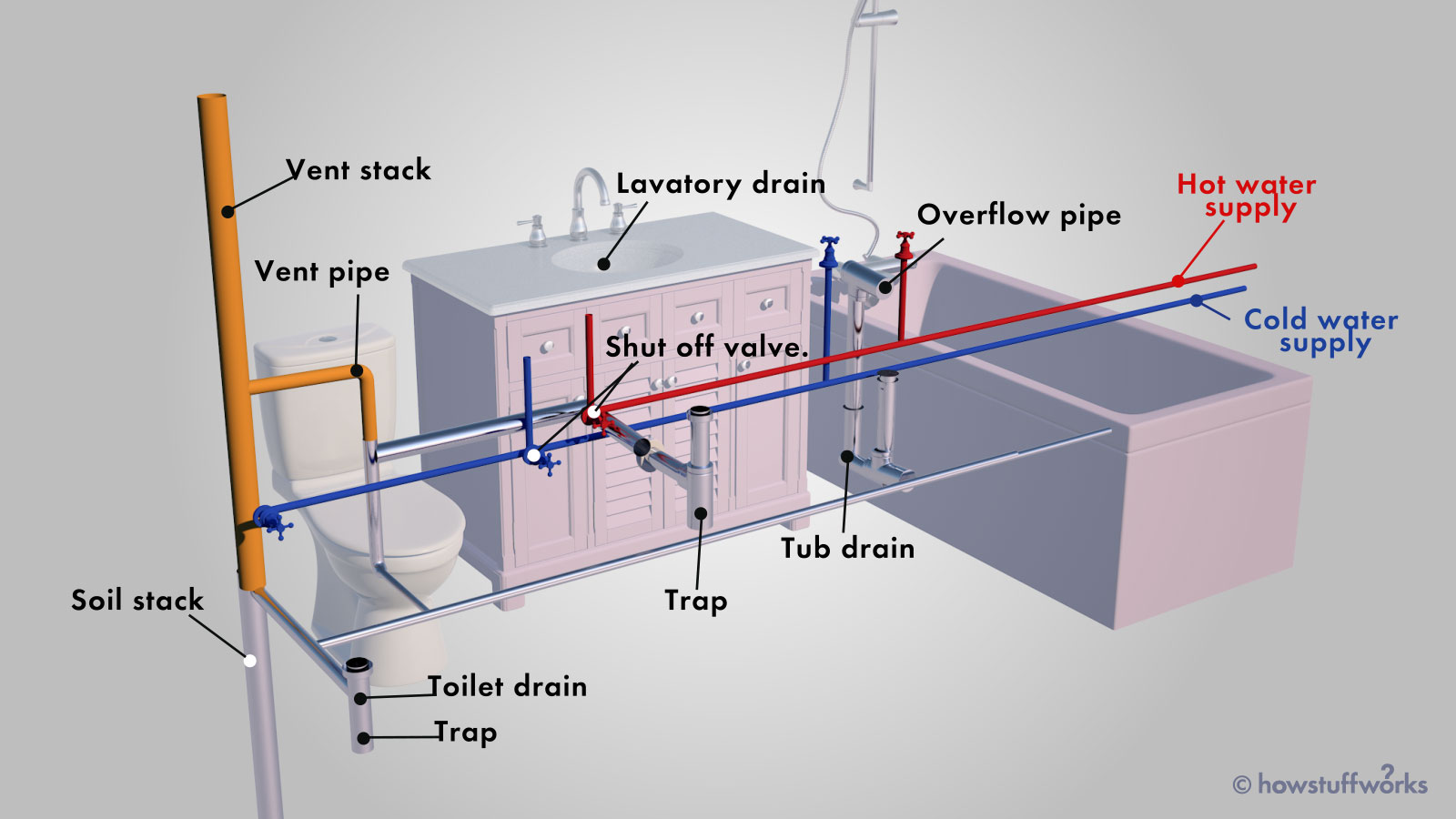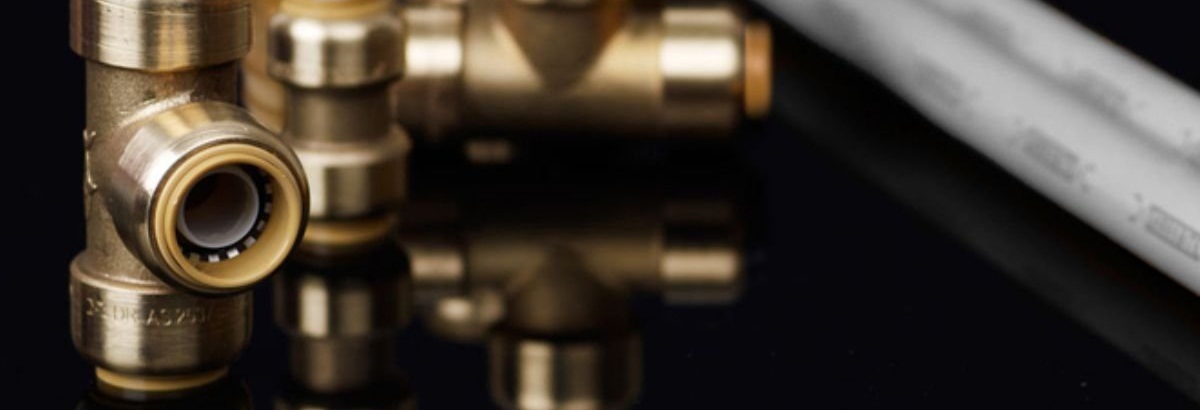This article in the next paragraphs on the subject of Anatomy of a House: Understanding the Components is quite fascinating. Don't miss it.

Recognizing just how your home's plumbing system works is crucial for each house owner. From supplying clean water for drinking, food preparation, and bathing to securely getting rid of wastewater, a well-kept plumbing system is crucial for your household's health and wellness and comfort. In this detailed guide, we'll check out the detailed network that comprises your home's pipes and offer ideas on maintenance, upgrades, and dealing with usual problems.
Intro
Your home's plumbing system is more than just a network of pipelines; it's a complex system that guarantees you have accessibility to clean water and efficient wastewater removal. Understanding its parts and just how they interact can help you avoid expensive repairs and guarantee whatever runs smoothly.
Fundamental Elements of a Pipes System
Pipelines and Tubes
At the heart of your pipes system are the pipelines and tubing that bring water throughout your home. These can be made from different products such as copper, PVC, or PEX, each with its benefits in regards to durability and cost-effectiveness.
Components: Sinks, Toilets, Showers, and so on.
Components like sinks, commodes, showers, and bathtubs are where water is utilized in your home. Comprehending just how these components attach to the pipes system helps in identifying issues and intending upgrades.
Shutoffs and Shut-off Factors
Shutoffs control the flow of water in your plumbing system. Shut-off valves are critical throughout emergency situations or when you require to make repairs, enabling you to isolate parts of the system without disrupting water circulation to the whole residence.
Water System
Key Water Line
The primary water line attaches your home to the metropolitan water or an exclusive well. It's where water enters your home and is dispersed to different components.
Water Meter and Pressure Regulator
The water meter actions your water use, while a stress regulator ensures that water moves at a risk-free pressure throughout your home's pipes system, protecting against damage to pipelines and components.
Cold Water vs. Hot Water Lines
Recognizing the difference between cold water lines, which supply water straight from the primary, and hot water lines, which lug warmed water from the water heater, helps in repairing and preparing for upgrades.
Drain System
Drain Piping and Traps
Drain pipelines carry wastewater away from sinks, showers, and toilets to the sewage system or sewage-disposal tank. Traps stop sewer gases from entering your home and also trap debris that can cause obstructions.
Ventilation Pipelines
Ventilation pipelines enable air into the water drainage system, avoiding suction that could slow water drainage and trigger catches to empty. Correct ventilation is crucial for preserving the integrity of your pipes system.
Significance of Correct Drainage
Making certain appropriate water drainage prevents back-ups and water damage. Consistently cleaning up drains pipes and maintaining catches can protect against expensive fixings and prolong the life of your pipes system.
Water Heating Unit
Sorts Of Water Heaters
Hot water heater can be tankless or conventional tank-style. Tankless heating units warmth water on demand, while storage tanks save heated water for instant use.
How Water Heaters Connect to the Plumbing System
Recognizing how hot water heater link to both the cold water supply and hot water distribution lines aids in detecting issues like not enough hot water or leaks.
Maintenance Tips for Water Heaters
Consistently flushing your hot water heater to get rid of debris, checking the temperature setups, and evaluating for leakages can expand its lifespan and enhance power efficiency.
Typical Pipes Concerns
Leaks and Their Causes
Leaks can happen because of maturing pipes, loose installations, or high water stress. Addressing leaks quickly stops water damages and mold and mildew growth.
Clogs and Obstructions
Obstructions in drains and bathrooms are commonly triggered by purging non-flushable things or a buildup of grease and hair. Utilizing drain screens and being mindful of what goes down your drains can avoid blockages.
Indications of Plumbing Issues to Look For
Low tide stress, slow-moving drains, foul odors, or unusually high water bills are signs of prospective plumbing problems that should be addressed immediately.
Plumbing Maintenance Tips
Routine Assessments and Checks
Schedule annual plumbing examinations to capture concerns early. Look for indicators of leakages, deterioration, or mineral accumulation in faucets and showerheads.
Do It Yourself Upkeep Tasks
Basic jobs like cleansing faucet aerators, looking for toilet leaks utilizing color tablet computers, or protecting revealed pipelines in cold climates can stop significant pipes concerns.
When to Call a Professional Plumber
Know when a pipes concern requires professional competence. Trying complicated repair services without appropriate understanding can result in more damages and higher repair work prices.
Updating Your Plumbing System
Factors for Updating
Upgrading to water-efficient fixtures or replacing old pipelines can enhance water high quality, decrease water bills, and boost the value of your home.
Modern Plumbing Technologies and Their Advantages
Discover innovations like smart leak detectors, water-saving commodes, and energy-efficient hot water heater that can save money and lower ecological influence.
Price Considerations and ROI
Calculate the ahead of time expenses versus long-lasting savings when taking into consideration pipes upgrades. Numerous upgrades spend for themselves with decreased utility costs and fewer repair services.
Environmental Influence and Conservation
Water-Saving Fixtures and Devices
Setting up low-flow taps, showerheads, and bathrooms can considerably lower water use without compromising performance.
Tips for Reducing Water Usage
Straightforward routines like taking care of leakages immediately, taking shorter showers, and running complete lots of laundry and dishes can save water and lower your energy expenses.
Eco-Friendly Plumbing Options
Consider lasting plumbing materials like bamboo for floor covering, which is durable and environment-friendly, or recycled glass for counter tops.
Emergency Readiness
Actions to Take During a Pipes Emergency
Know where your shut-off shutoffs are located and how to switch off the water system in case of a burst pipeline or major leak.
Value of Having Emergency Calls Helpful
Maintain get in touch with information for neighborhood plumbing technicians or emergency solutions readily offered for quick feedback during a plumbing situation.
DIY Emergency Situation Fixes (When Relevant).
Short-term solutions like using duct tape to spot a dripping pipe or putting a pail under a dripping faucet can decrease damage up until a specialist plumber shows up.
Verdict.
Understanding the anatomy of your home's pipes system encourages you to maintain it efficiently, conserving money and time on repairs. By following routine upkeep regimens and staying informed regarding contemporary pipes technologies, you can ensure your pipes system operates effectively for several years to come.
HOW YOUR PLUMBING SYSTEM WORKS
Which Pipes Do What?
Blue lines = fresh water supply entering the building
Red lines = hot water supply entering the building
Grey lines = pipes carrying waste away from the building and venting pipes carrying gases away from the building (through the roof)
YOUR MAIN PLUMBING SYSTEMS
There are two main plumbing systems that support your home s basic plumbing needs one that brings clean water into your home, and one that sends dirty water away from your home. Connected to the toilet, bath, shower, and other faucets in your home, these two systems keep your water flowing in the right directions.
ACCESSING FRESH WATER
Fresh and clean water is brought into your home through the main water supply line . Filtered through one pipe, this water is pressured to flow into the various fixtures in your home at any given time.
This water can be sourced from a well located on your property, a pond or river (mostly cottages), or, as in most cases, from the city s municipal water treatment centre. However, it is important to note that water that is untreated, such as the water siphoned from ponds or rivers, may not be safe to drink. Personal water supplies always need to be treated for hardness and contaminants before consumed.
MUNICIPAL WATER SUPPLIES
Improve taste and odour
Remove sediment
Eliminate hardness
Reduce chlorine
COLD WATER SUPPLY VS. HOT WATER SUPPLY
Cold water flows into your home or building through the service line, which then distributes hot or cold water to your fixtures. This line is most commonly run through a central column that runs floor to floor. Hot water runs in short and straight pipes as the longer the pipeline, the more heat that will be lost in the transfer. Having shorter pipes also allows residents to access hot water more quickly.
WASTE WATER SYSTEM
Your wastewater system is divided into two parts pipes that send wastewater away from your home and venting pipes that send sewer gas away from your home. Sewage water travels through pipes that flush the water and waste towards local sewers that are operated and managed by your city or town. Most sewer systems rely on gravity to move the wastewater to where it needs to go.
The further away from your toilet or sink, the larger wastewater pipes become. This allows for waste to be disposed of from various parts of your home or business at once without pipe blockages. The angle and flow of these pipes are also essential for keeping your waste pipes clear of build up.
https://harrisplumbing.ca/how-your-home-plumbing-system-works/

HOW YOUR PLUMBING SYSTEM WORKS
Which Pipes Do What?
YOUR MAIN PLUMBING SYSTEMS
There are two main plumbing systems that support your home s basic plumbing needs one that brings clean water into your home, and one that sends dirty water away from your home. Connected to the toilet, bath, shower, and other faucets in your home, these two systems keep your water flowing in the right directions.
ACCESSING FRESH WATER
Fresh and clean water is brought into your home through the main water supply line . Filtered through one pipe, this water is pressured to flow into the various fixtures in your home at any given time.
This water can be sourced from a well located on your property, a pond or river (mostly cottages), or, as in most cases, from the city s municipal water treatment centre. However, it is important to note that water that is untreated, such as the water siphoned from ponds or rivers, may not be safe to drink. Personal water supplies always need to be treated for hardness and contaminants before consumed.
MUNICIPAL WATER SUPPLIES
COLD WATER SUPPLY VS. HOT WATER SUPPLY
Cold water flows into your home or building through the service line, which then distributes hot or cold water to your fixtures. This line is most commonly run through a central column that runs floor to floor. Hot water runs in short and straight pipes as the longer the pipeline, the more heat that will be lost in the transfer. Having shorter pipes also allows residents to access hot water more quickly.
WASTE WATER SYSTEM
Your wastewater system is divided into two parts pipes that send wastewater away from your home and venting pipes that send sewer gas away from your home. Sewage water travels through pipes that flush the water and waste towards local sewers that are operated and managed by your city or town. Most sewer systems rely on gravity to move the wastewater to where it needs to go.
The further away from your toilet or sink, the larger wastewater pipes become. This allows for waste to be disposed of from various parts of your home or business at once without pipe blockages. The angle and flow of these pipes are also essential for keeping your waste pipes clear of build up.
https://harrisplumbing.ca/how-your-home-plumbing-system-works/
I ran across that blog posting on Plumbing Installation 101: All You Need to Know while browsing on the internet. Do you know about somebody who is looking into the subject? Feel free to share it. Many thanks for going through it.
Services